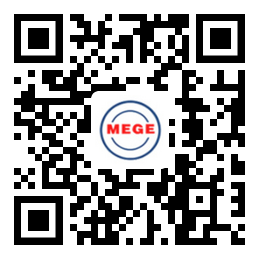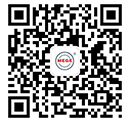Eurotrans Shapes the Future with Standards
18 Jan,2024

The importance of standardization work is often underestimated or given little attention. For companies, it is often an important basis for innovation and competitiveness. It is therefore important to inspire young talents for standardization. Andre Thuswaldner, vice president of Eurotrans, described this topic vividly:
What are Standards?
Standards are documents that provide rules, guidelines and requirements for the design, production, use or performance of materials, products, processes, services or persons. They are the result of voluntary national, European and international standardization activities. The use of standards is voluntary. Standards only become binding if they are the subject of contracts between parties, for example between vendor and buyer, or if compliance with them is mandatory by law.
Advantages of Standards
Standards provide a common language for an efficient communication and workflow between designers, manufacturers, vendors, end-users, certification bodies. Standards can serve as a catalyst for innovations and help in anchoring solutions more quickly on the market.
Standards define compatibility requirements. As everybody knows, compatibility between individual components and systems is essential. Standards as a global language of technology facilitate market access and help to reduce technical trade barriers. Standards help to save costs, for example overhead costs of every part bought or sold.
Standards improve product safety by defining quality and minimum requirements, that help to protect users, their health and safety, and the environment. Standards reduce product liability risk by providing clarity about the properties of a product and are considered to be clear and recognized rules of technology. In contracts, reference to standards increases legal certainty.
Who creates Standards?
Did you know? Standards are developed by the interested parties themselves and not by the legislator, government authority or a national regulator. All parties interested in the specific topic can get involved with the professional work within the standard committees and contribute with their expertise. Industry experts drive all aspects of the standard development process, from deciding whether a new standard is needed to defining its technical content.
Organization of ISO
ISO is a global network of national standards bodies. ISO has one member per country, i.e. each member represents ISO in its country. P-members can actively participate by sending nominates into the working groups and by voting on the standards at various stages of their development. O-members can observe the standards that are being developed and can offer comments and advice.
A technical committee (TC) or subcommittee (SC) consists of national bodies (e.g. AFNOR, DIN, SNV…) indicated their involvement in the work as a P-member to participate actively or O-member to observe the work done in the specific committee. Working groups (WG) are established by a technical committee or subcommittee and consist of individual specialists, such as designers, manufacturers, end-users and academia. These specialists are put forward by the ISO member bodies who have indicated to work actively in the committee (P-members).
How is an ISO Standard developed?
The proposal for a new standard can be submitted by ISO member bodies, ISO technical committees or partner organizations (liaison). ISO checks if there is a global market need by asking the countries to vote. ISO members can choose to actively participate in a technical committee. Depending on the size of the committee, there is a minimum number of P-members (4 or 5) needed for active contribution. If it is approved, the proposal gets added to an ISO committee’s work program. They can nominate experts to write the draft standard in the working group. After consensus, the document is sent up to the parent technical committee for review. The technical committee shares the draft standard with the national experts for comment. Once the national standards bodies receive their feedback, they will then vote to approve or disapprove the draft. The technical committee sends the draft to the ISO central secretariat which sends it to all ISO member bodies for voting. If the ballot was closed and the vote passed, then it can be published as an International Standard. The standard is reviewed on a regular basis to ensure that it is in line with the technical progress and either confirmed, revised or withdrawn. The review takes into account the feedback from national experts.
Types of ISO Documents
Beside the International Standard (IS), as discussed before, we also know Technical Specifications (ISO/TS) and Technical Reports (ISO/TR). ISO/TS is published for immediate use, but it also provides a means to obtain feedback, because work is still in development. The aim is that it will eventually be transformed and republished as an International Standard. An ISO/TR is informational only and may contain, for example, technical research, tutorials or information on 'state-of-the-art' developments.
Examples of ISO Standards in the field of drive technology
Standard Title
IEC 61400-4 Wind energy generation systems - Part 4: Design requirements for wind turbine gearboxes.
ISO 1328-1 Cylindrical gears - ISO system of flank tolerance classification -Part 1: Definitions and allowable values of deviations relevant to flanks of gear teeth.
ISO 17485 Bevel gears - ISO system of accuracy.
ISO 4468 Gear hobs - Accuracy requirements.
ISO 701 International gear notation - Symbols for geometrical data.
ISO 1122-1 Vocabulary of gear terms - Part 1: Definitions related to geometry.
ISO 1122-2 Vocabulary of gear terms - Part 2: Definitions related to worm gear geometry.
ISO 10825-1 Gears - Wear and damage to gear teeth - Part: 1: Nomenclature and characteristics
ISO 6336-1 Calculation of load capacity of spur and helical gears - Part 1: Basic principles, introduction and general influence factors.
ISO 6336-2 Calculation of load capacity of spur and helical gears -Part 2: Calculation of surface durability (pitting).
ISO 6336-3 Calculation of load capacity of spur and helical gears - Part 3: Calculation of tooth bending strength.
ISO 14635-1 Gears - FZG test procedures - Part 1: FZG test method A/8,3/90 for relative scuffing load-carrying capacity of oils.
ISO 14635-2 Gears - FZG test procedures - Part 2: FZG step load test A10/16, 6R/120 for relative scuffing load-carrying capacity of high EP oils.
ISO 14635-3 Gears - FZG test procedures - Part 3: FZG test method A/2, 8/50 for relative scuffing load-carrying capacity and wear characteristics of semifluid gear greases.
ISO 10300-1 Calculation of load capacity of bevel gears - Part 1: Introduction and general influence factors.
ISO 10300-2 Calculation of load capacity of bevel gears - Part 2: Calculation of surface durability (pitting).
ISO 10300-3 Calculation of load capacity of bevel gears - Part 3: Calculation of tooth root strength.
ISO 23509 Bevel and hypoid gear geometry.
ISO 6336-5 Calculation of load capacity of spur and helical gears - Part 5: Strength and quality of materials.
ISO 4156-1 Straight cylindrical involute splines - Metric module, side fit - Part 1: Generalities.
ISO 4156-2 Straight cylindrical involute splines - Metric module, side fit - Part 2: Dimensions.
ISO 4156-3 Straight cylindrical involute splines - Metric module, side fit - Part 3: Inspection.












